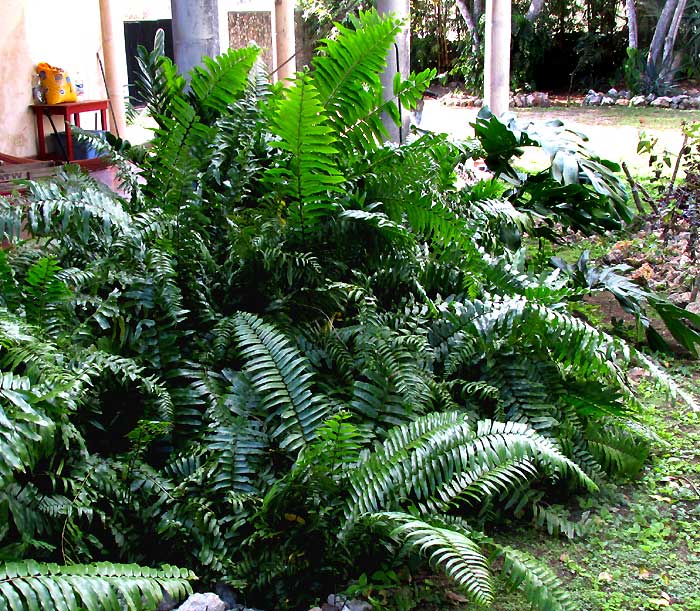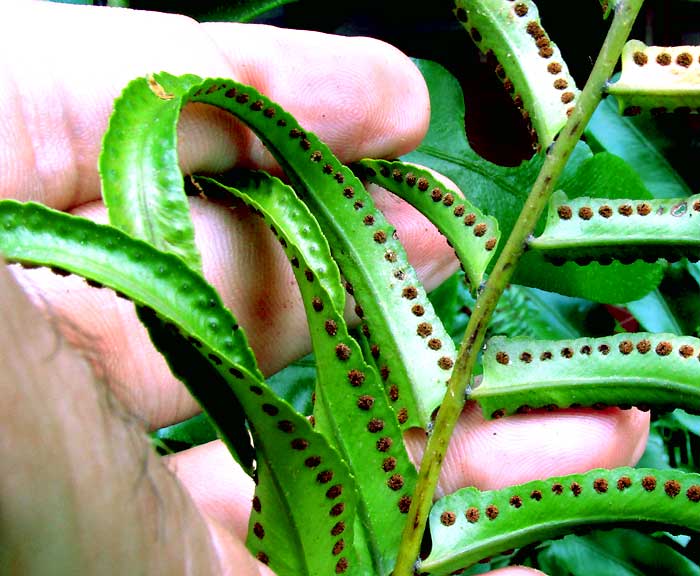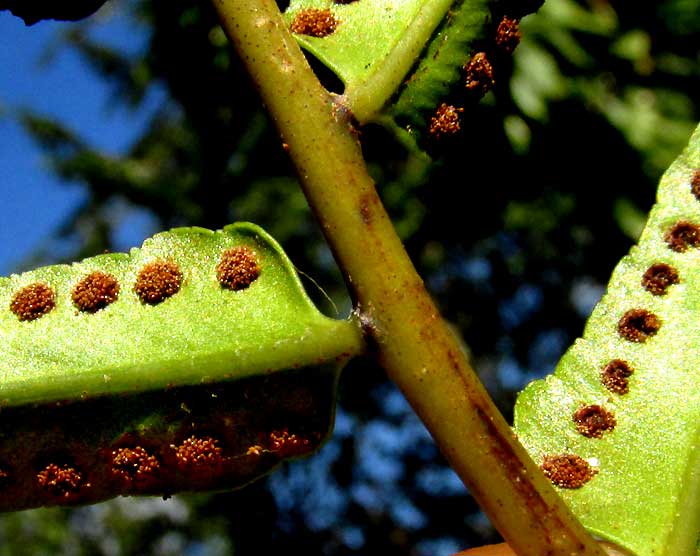Excerpts from Jim Conrad's
Naturalist Newsletter
issued on December 23, 2019, from the forest just west of Tepakán; elev. ~9m (~30 ft), N21.053°, W89.052°; north-central Yucatán state, MÉXICO
SWORD FERN
Many homes in this area are ornamented with ferns such as those shown below.

Ferns of various species with this general appearance often are called Sword Ferns, and this particular species, at least in North America, may be marketed as the Boston Fern, and often is sold in hanging baskets. Several sword fern species may turn up both in cultivation and as ornamentals, so sometimes it's hard to know which sword fern you have. As usual with ferns, it's important to know how the spore-producing sporangia are presented. The fern in the picture, standing about six feet tall (1.8m) consisted almost entirely of sterile fronds. This may be because plant breeders seek sterile forms, since many people think that fronds bearing brown spore-producing structures are diseased. However, our ferns offered at least one frond with sporangia in roundish sori on the lower surface of pinnae, and these pinnae were considerably smaller and narrower than the sterile ones. The sori are shown below:

At first glace the sori look round, but -- especially those in the picture's lower, right corner -- some show up as crescents, or C-shaped. That's the basic shape of sori among the sword ferns, just that when the sori are mature the sporangia enlarge and obscure the indentation. A closer look at some pinnae bases is shown below:

Important features distinguishing this species include the pinnae's general hairlessness, the sori's position a little closer to its pinna's margin than halfway, and the distance between the pinnae on the frond's midrib, or rachis. In a closely related species the rachis is mostly hidden because the pinnae are so close together.
These features point to NEPHROLEPIS EXALTATA, individuals of which are "pantropical" in occurrence, meaning that throughout the world's humid tropical zones you might find it growing wild. Though it turns up in humid southern Mexico, here in the northern Yucatan it's too arid to survive in our forests. Clearly, though, if it's taken care of, it can be lush, vigorous and pretty
Numerous cultivars have been developed from the wild species, including a dwarf one. My mother loved hanging baskets of a form with especially frilly fronds.